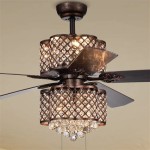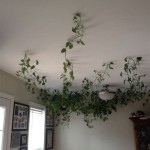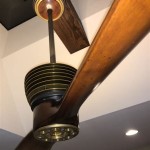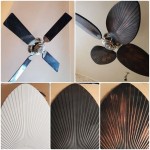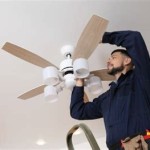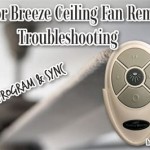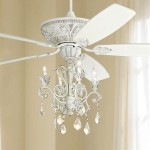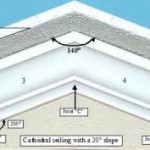False Ceiling: Design, Functionality, and Types
A false ceiling, also known as a drop ceiling, is a secondary ceiling installed below the main structural ceiling. It is a common architectural feature that serves multiple purposes, ranging from aesthetic enhancements to improving insulation and concealing unsightly elements. This article will delve into the design, functionality, and different types of false ceilings, providing comprehensive information for homeowners and designers.
Aesthetic Enhancement and Design Flexibility
One of the key functions of a false ceiling is to enhance the aesthetic appeal of a space. It offers numerous possibilities for customization, allowing homeowners to create unique and visually interesting interior designs. The ceiling surface can be finished with a wide range of materials, including drywall, plaster, wood, metal, and even fabric. Different colors, textures, and patterns can be incorporated to complement the overall décor and add depth and dimension to the room.
Furthermore, false ceilings can be designed to create various architectural features, such as recessed lighting, decorative moldings, and intricate patterns. These elements can add visual interest and enhance the overall elegance of the space. The ability to integrate lighting fixtures seamlessly within the ceiling design creates a more sophisticated and inviting atmosphere. By strategically incorporating different materials and design elements, false ceilings can be transformed into a focal point that complements the existing furniture and décor.
Functional Benefits of False Ceilings
Beyond aesthetics, false ceilings offer several functional benefits, making them a practical choice for many homeowners. They can significantly improve the insulation and thermal performance of a space, reducing energy consumption and creating a more comfortable living environment. By incorporating insulation materials within the ceiling cavity, false ceilings help to prevent heat loss in the winter and heat gain in the summer. This can lead to lower heating and cooling costs and provide a more comfortable indoor temperature year-round.
Another important functional benefit of false ceilings is their ability to conceal unsightly elements within the ceiling space. This includes pipes, wires, ductwork, and other structural components that can detract from the overall aesthetics of a room. By creating a concealed cavity above the false ceiling, these elements are effectively hidden from view, resulting in a cleaner and more streamlined appearance. This is particularly useful in spaces where such elements are prominent, such as basements, attics, or areas with complex plumbing and electrical systems.
Types of False Ceilings
False ceilings are available in a wide range of types, each with its own unique characteristics and applications. Some of the most common types include:
1. Gypsum Board Ceilings
Gypsum board ceilings are among the most common types of false ceilings. They are constructed using gypsum boards, which are lightweight, fire-resistant, and easy to install. Gypsum board ceilings are highly versatile and can be painted, textured, or even covered with wallpaper to achieve different aesthetic effects. They are suitable for a wide range of applications, including residential, commercial, and institutional spaces.
2. Suspended Ceilings
Suspended ceilings, also known as grid ceilings, are another popular type of false ceiling. They consist of a grid system made of metal or aluminum, which supports panels that are then installed to form the ceiling surface. Suspended ceilings are known for their modularity, allowing for easy access to the ceiling cavity for maintenance and repairs. They are also highly adaptable, with a wide range of panel materials available, including mineral fiber, acoustic panels, and even wood panels.
3. Stretch Ceilings
Stretch ceilings, sometimes referred to as membrane ceilings, are a more contemporary type of false ceiling. They are made of a thin, flexible PVC film that is stretched and fixed to a perimeter frame. Stretch ceilings are known for their sleek and seamless appearance, creating a modern and elegant look. They are also available in a wide range of colors, textures, and finishes, offering endless design possibilities.
4. Wooden Ceilings
Wooden ceilings are a classic and timeless option that adds warmth and character to a space. They can be made from various types of wood, including pine, oak, cedar, and mahogany, each offering unique grain patterns and color variations. Wooden ceilings can be installed as planks, panels, or even as a more elaborate coffered design. They are particularly well-suited for creating a rustic, farmhouse, or traditional aesthetic.
The choice of a false ceiling type depends on several factors, including budget, desired aesthetics, functionality, and the specific requirements of the space. By carefully considering these factors, homeowners and designers can select the best type of false ceiling to meet their needs and create a beautiful and functional living environment.
8 Types Of False Ceiling For Home

8 Types Of False Ceilings Commonly Used For Home Ultratech Cement

Types Of False Ceiling Gypsum Glass Wooden Fiber Materials Nerolac

8 Types Of False Ceilings Commonly Used For Home Ultratech Cement

Types Of False Ceilings And Its S Theconstructor Org

Types Of False Ceiling Civil Engineering Portal

8 Types Of False Ceilings Commonly Used For Home Ultratech Cement

Types Of False Ceiling Gypsum Glass Wooden Fiber Materials Nerolac

False Ceiling And Types Of Material Colourdrive

What Are Diffe False Ceiling Channel Types
Related Posts

